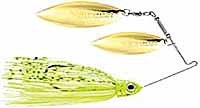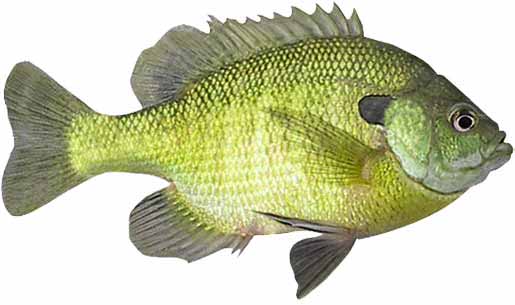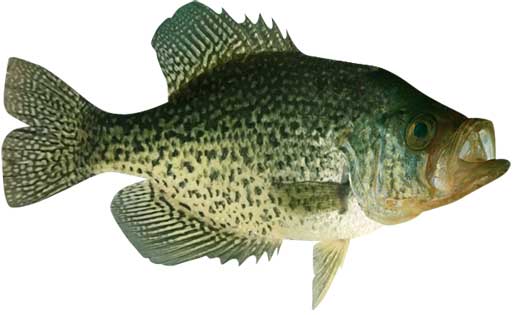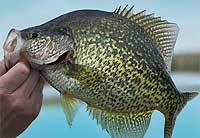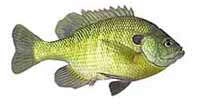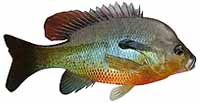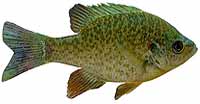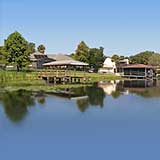Fishing Report For Lake Apopka, FL
By Rick Seaman
August 29, 2025
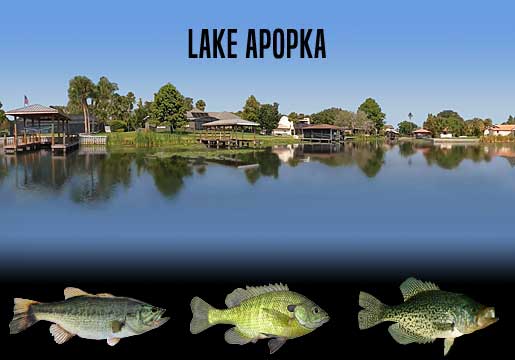
Fishing Reports
Popular Fish Species Lake Apopka, FL
Largemouth Bass
Current Report: Fair To Good
FALL. Now that Fall has arrived, bass here are following schools of baitfish into coves and shallow bays where topwater, jerkbaits, crankbaits, and slow-rolled spinnerbaits are catching most of the bass. Later in Fall, as deeper water cools, bait and bass seek out 8 to 12 feet of water where. Flutter spoons and jigs are often good choices. Good reports come from anglers fishing around the Hull Island area.
WINTER. Winter will isolate them around slightly deeper structure, flats, points and creek channels. They can be found from 8 to 12 feet deep, often around deep weed lines. Here they hold, feeding less frequently, awaiting warmer water to return in Spring. Slow, patient presentations work best with drop shots, jigs and stick worms.
SPRING. Once water temperatures rise into the low 60's, largemouth will move from deep wintering holes, to shallower water nearby spawning areas. Vibrating jigs, jerkbaits and spinnerbaits typically get bites just away from the shoreline. At this time they are feeding aggressively and preparing for the spawn. Once water warms into the mid to high 60's, they will move into 1 to 4 feet of water, and create nests, then lay their eggs. Immediately afterwards, females move to deeper water and males remain to guard the eggs, and then the fry. After a couple weeks, the males also move to slightly deeper water. Crankbaits, vibrating jigs, plastic worms and swimbaits are catching bass during this period.
SUMMER. Water temperatures will warm considerably in Summer. Bass will feeding shallow, early and late in the day, where they will be caught on topwater, crankbaits and swimbaits. Wacky-rigged stick worms always catch finicky bass when the bite is slow. Largemouth bass here feed on gizzard shad, threadfin shad, small sunfish and crawfish. During the hotter parts of the day, they are being caught on points, channel edges, and ledges 8 to 12 feet deep.
Bluegill
Current Report: Good
Bluegill are a primary food source for predator fish here, as well as a fun fish to catch.
FALL. Cooling, Fall weather drops the water temperature in the shallows and is luring bluegill into the shallows along the shoreline. Steeper banks on the south and west side of the lake, and shallow, weedy areas with drop-offs are drawing bluegill in. Later in Fall, as the shallows get colder, bluegill will move slightly deeper in the same areas.
WINTER. Cooling shallows have driven the bluegill back to deeper cover, in water ranging from 8 to 12 feet deep. In areas with no cover, anglers typically find them around sharp drops into deeper water.
SPRING. In early Spring, bluegill migrate from winter holding areas toward the shoreline areas, and are typically caught around 5 to 8 feet deep. As the water warms to the mid 70's they will begin the spawning ritual, building nests in 1 to 3 feet of water. Many of the bigger bluegill prefer to spawn a bit deeper, depending on water clarity. Small spinners and swimbaits, or jigs tipped with small pieces of nightcrawlers are good choices for catching a lot of bluegill in spring. A hook, line, weight and bobber with small pieces of worms also catches lots of bluegill.
SUMMER. Following the spawn, most of the bigger bluegill migrate to deeper water, around 8 to 10 feet deep. They prefer rocky or weedy areas, often hanging out on steep, rocky banks where they can move up and down to feed without having to travel a great distance. Small spoons, underspins, and mini-crankbaits are catching some of the bigger bluegill. Earthworms are also catching good numbers.
Black Crappie
Current Report: Good To Very Good
FALL. Baitfish, which are moving into shallow areas, are drawing crappie in as well, where they will feed heavily in preparation for the cold Winter. Small spoons, along with minnows, hair jigs, and crappie jigs, are good options during this feeding marathon. Late fall starts the migration deeper toward winter holding areas, for both crappie and baitfish. Flutter spoons are ideal during this transition
WINTER. Once the shallows have gotten colder, crappie will migrate to deeper holding areas, mostly off shore. At this time they are typically caught using a very slow presentation, in 8 to 12 feet of water. Weedy areas continue to be a factor in holding crappie.
SPRING. In early Spring, crappie begin staging in 5 to 7 feet of water, just outside spawning bays and shallow flats. Spring is prime time to be on the water, as crappie have moved shallow to spawn. At that time, they are typically caught in 2 to 4 feet of water. Docks and vegetation are where most anglers are catching good numbers using small crappie jigs or live minnows. After the spawn, crappie move outside the spawning area and hold on the closest cover. Light tackle with 4 lb to 8 lb line is a popular choice.
SUMMER. Water temperatures warm considerably, and crappie fishing is usually decent. Crappie have retreat to depths of 8 to 12 feet, or embedded in the shade of heavy vegetation. This is a good time to focus around deeper docks.
Fishing Video
Fish species to fish for...
Guide to fishing for largemouth bass, channel catfish, black crappie, bluegill, redbreast sunfish, redear sunfish, warmouth, hybrid striped bass and chain pickerel at Lake Apopka in Florida.
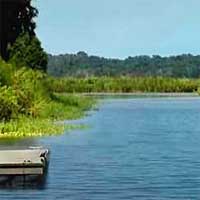
Lake Apopka is a 30,700-acre lake, with 30 miles of shoreline. This fishery offers fishing for bass, bluegill, crappie, catfish, sunfish, pickerel and hybrid stripers. The Lake Apopka Loop Trail which swings along the northern half of the lake affords a variety of options for fishing from the bank.
Primary fish species to catch
Click images for fishing tips and details about each species.
Today's Weather & Forecast
Fishing Boat Rentals
Click here for fishing boat rentals.
Public Boat Launch Ramps & Landings
Click here for boat ramps.
Fishing License
Click here for a Florida Fishing License.
Map - Fishing & Access
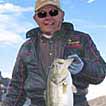
Rick Seaman is a fishing enthusiast with over five decades of fishing experience, a retired tournament fisherman, author of numerous published articles on fishing, and co-author of the book "Bass Fishing - It's not WHAT you throw, It's WHERE you throw it".
Contact Information
Lake Apopka North Shore
24600 County Rd 448A
Mt Dora, FL 32757
386 329-4404
Fishing lakes in each state
083125
Lake Apopka, Florida Report
FLORIDA


Fishing for bass, crappie and other species in central FL.








